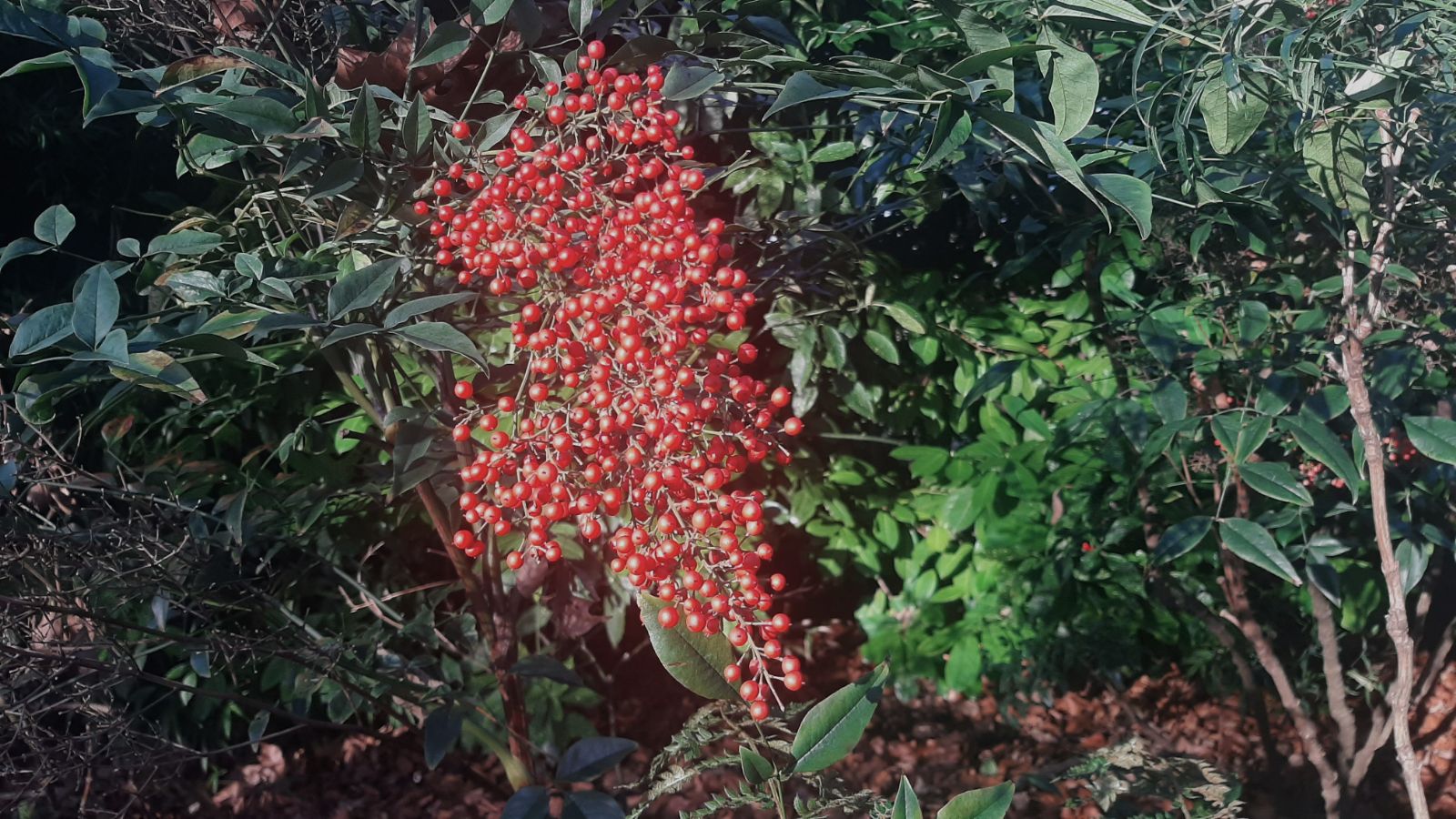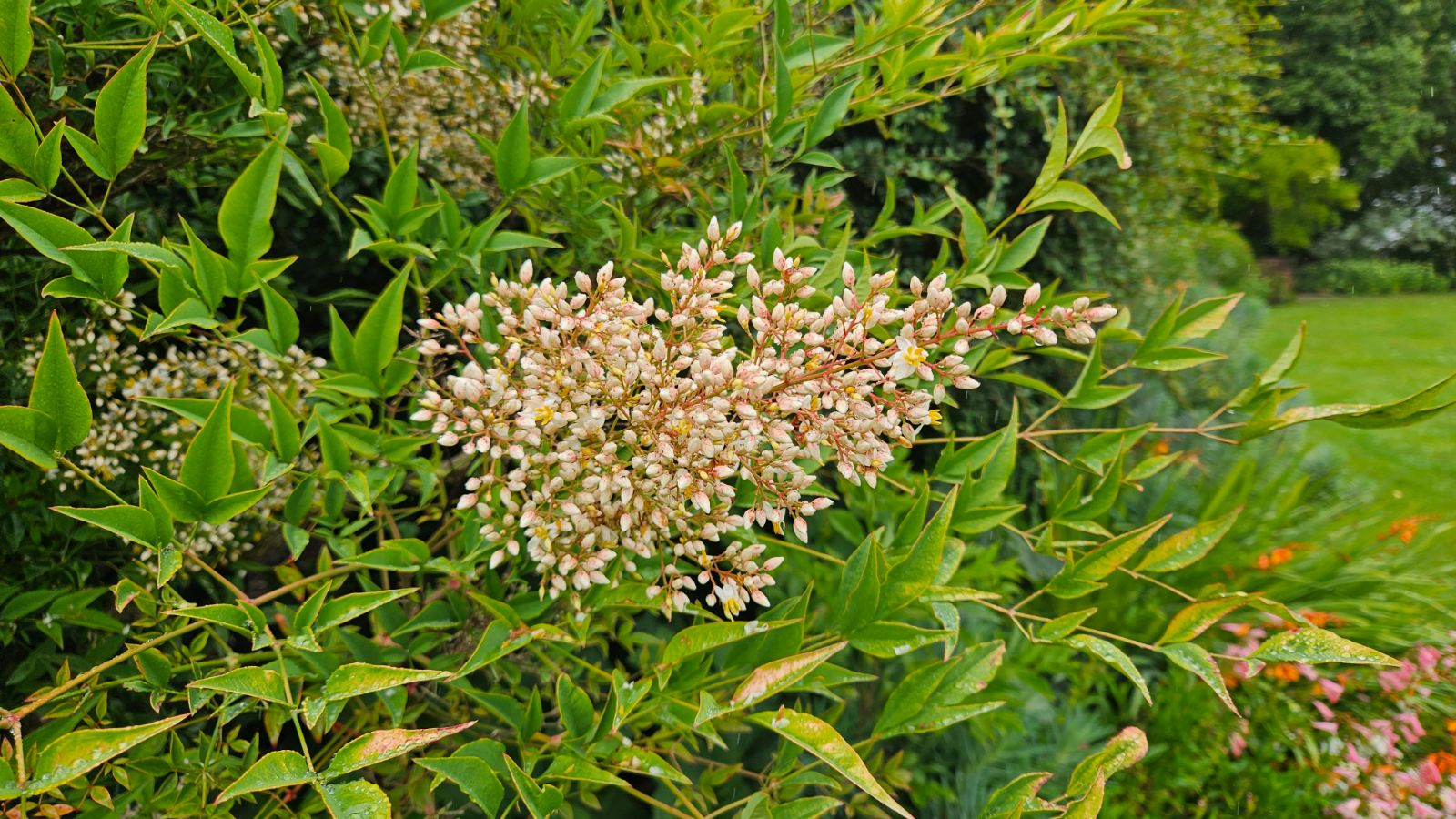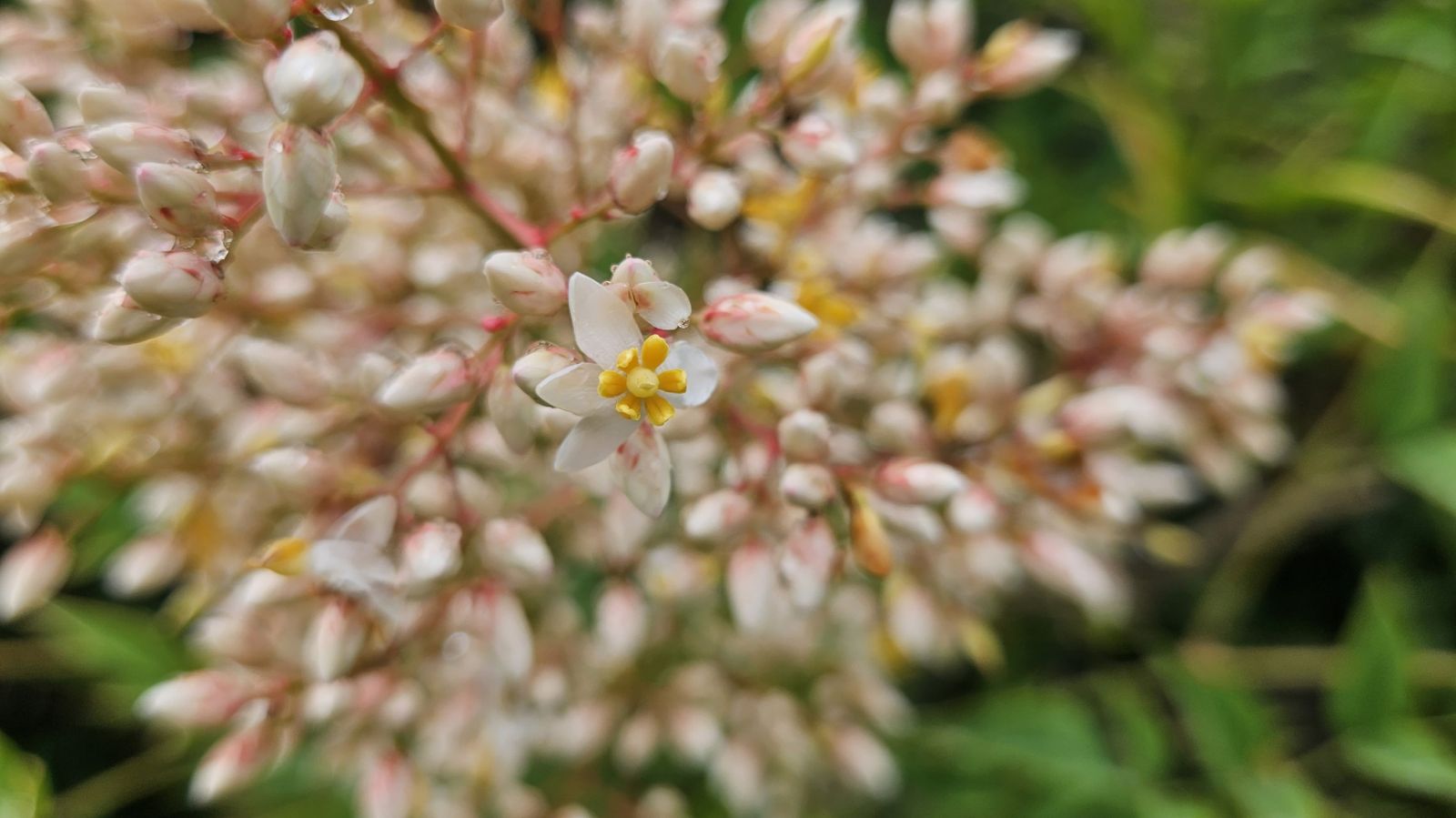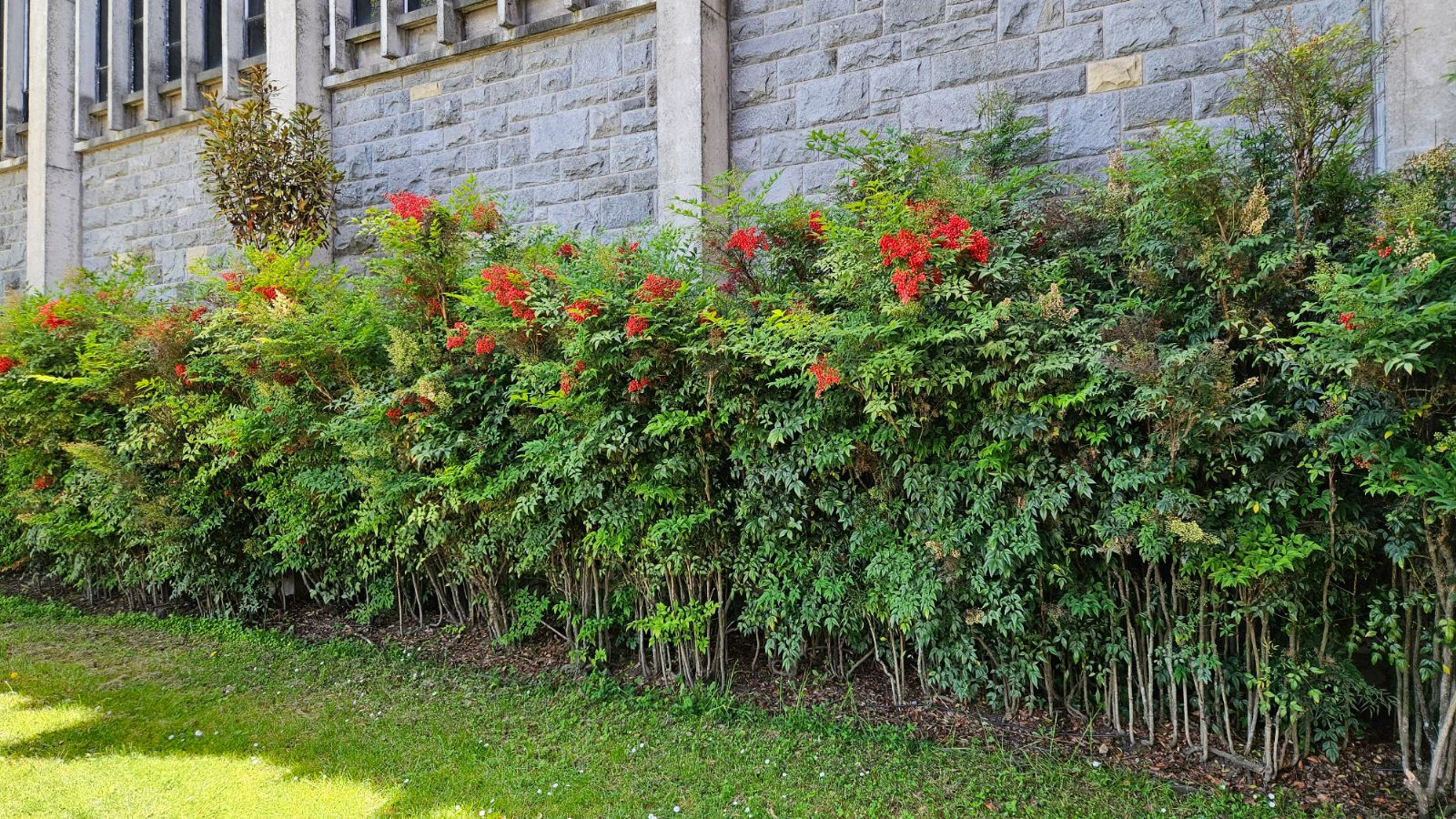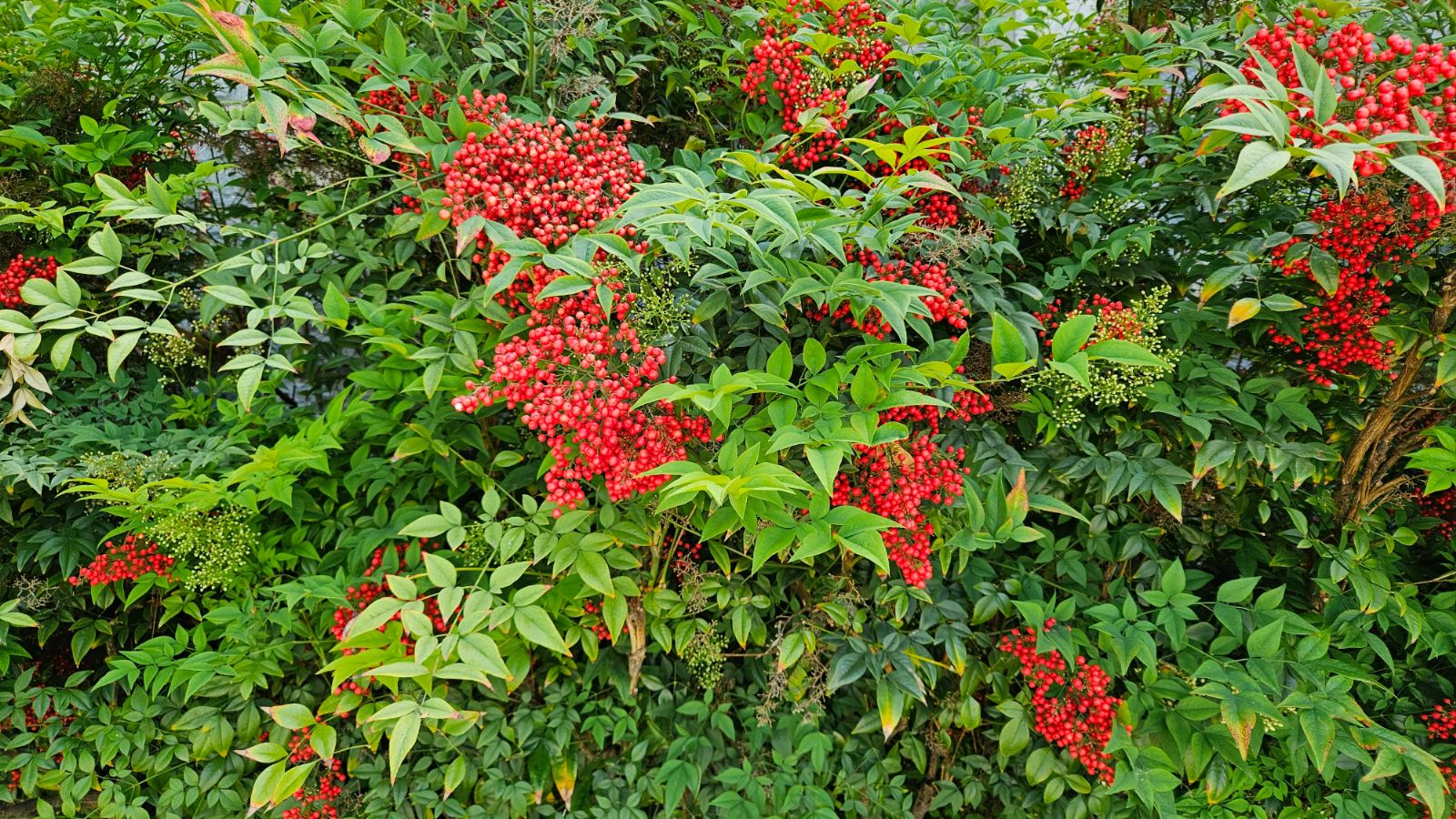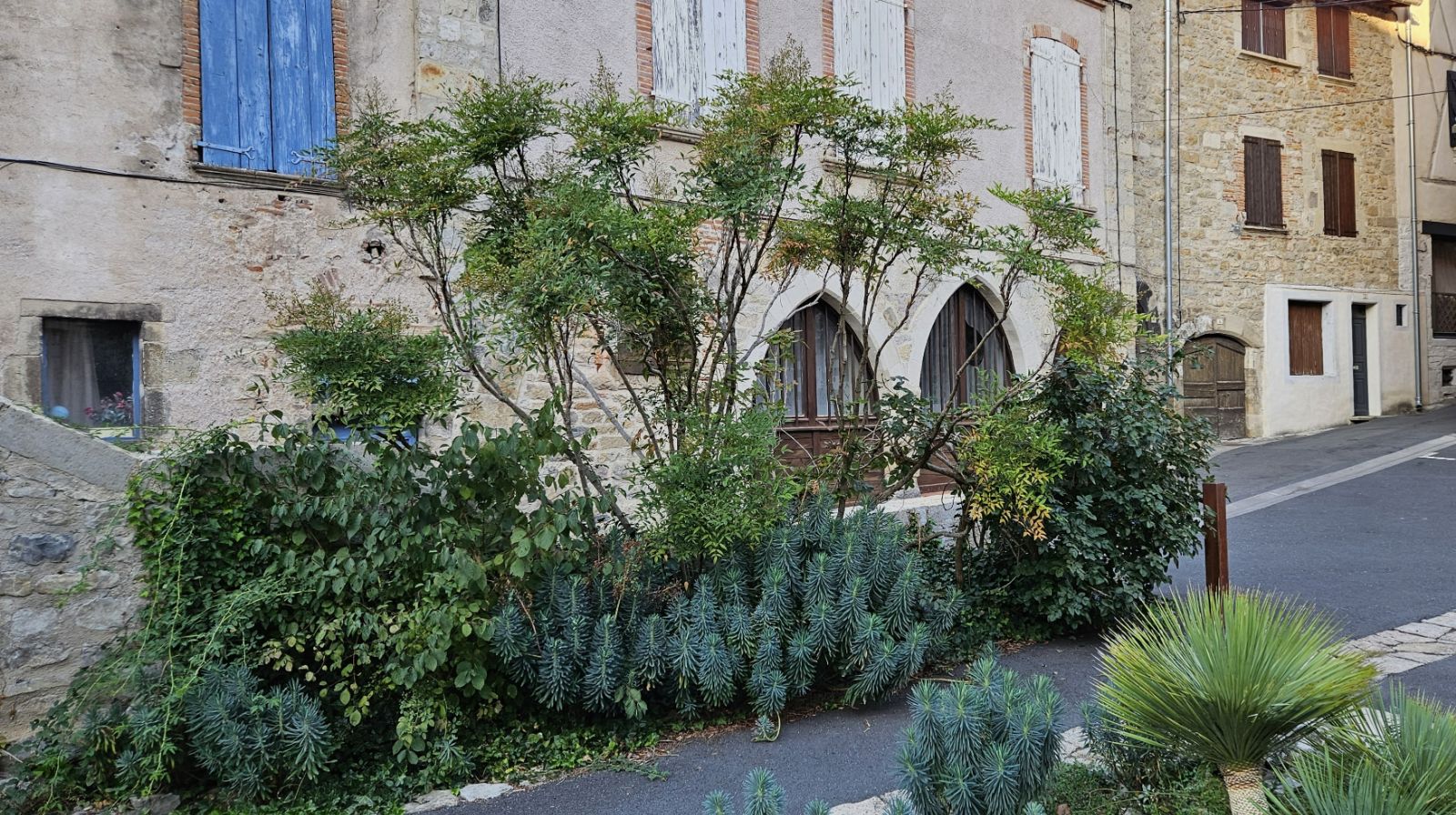Nandina domestica
Credits
Article from Bean's Trees and Shrubs Hardy in the British Isles
Recommended citation
'Nandina domestica' from the website Trees and Shrubs Online (treesandshrubsonline.
Genus
An evergreen shrub, with erect, unarmed, and unbranched stems, 6 to 8 ft high in this country, even taller in warmer ones, the lower part covered with the bases of fallen leaves. Leaves 1 to 11⁄2 ft long, much divided (doubly or trebly pinnate), composed of numerous, linear-lanceolate leaflets, which are 11⁄2 to 4 in. long, long-pointed, quite glabrous, tinged with red when young, becoming purplish in autumn. Flowers in an erect panicle, 8 to 15 in. long, borne at the top of the stem, each flower 1⁄4 to 1⁄2 in. across, white, with large yellow anthers. Berries two-seeded, globular, 1⁄3 in. in diameter, bright red normally, but in some forms more purplish red; the stigma persisting, as in barberry fruits.
Introduced in 1804 from Japan, where it is much cultivated, but really a native of China. Its chief merit in this country is its elegant bamboo-like form, for its flowers are not very showy, nor are its fruits freely produced. It needs a good, moist soil and a warm, sunny position sheltered from the wind. Given these conditions it should succeed in all but the coldest gardens. There is a plant 6 ft high and over twenty-five years old on the rock garden in the Royal Horticultural Society Garden at Wisley. Another almost as tall, planted in 1938, grows at Belhaven House near Dunbar in East Lothian. It is best propagated from seeds, which, however, do not, as introduced, germinate freely. Cuttings put in a mild heat will root in time, but they too are slow. The young plants should be grown under glass for a year or two.

